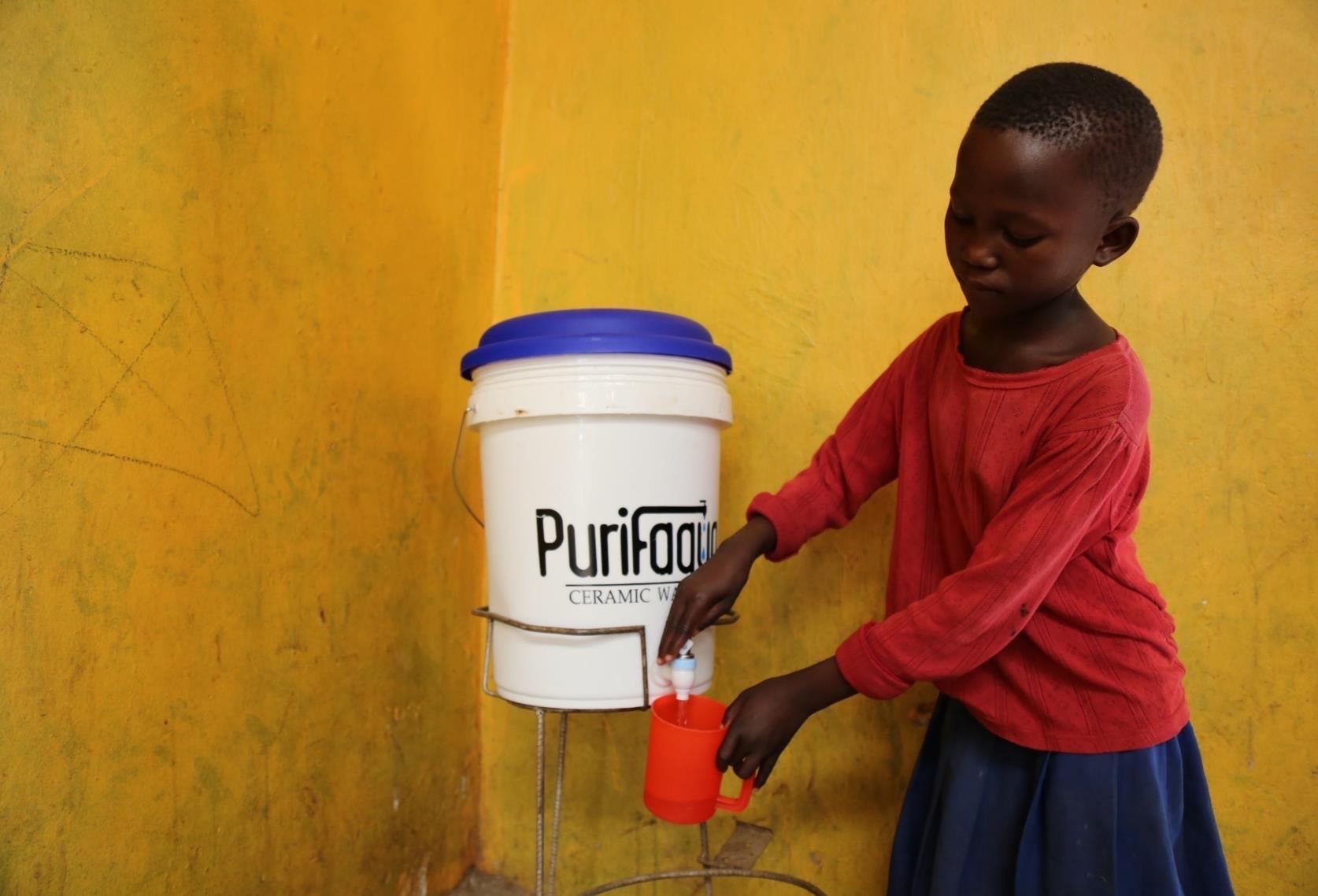Executive Summary
This case study supports and illustrates the theoretic factsheet "Feasibility Study - Understanding the why and how of your market" with practical insights.
How to start a ceramic filter business – insights from "SPOUTS of Water", Uganda
‘SPOUTS of Water’ is the local manufacturer and distributor of Purifaaya, an affordable and effective ceramic water filter (CWF), in Uganda. With international agencies and NGOs striving to help deliver clean water to impoverished areas, SPOUTS was determined to take a different, more sustainable, approach to providing access to clean water to the 38 million Ugandans in need. SPOUTS was founded in 2010 as a design project when Kathy Ku, co-founder, first travelled to Uganda and noticed the lack of affordable local solutions for accessing clean drinking water. To come up with an innovative solution Kathy leveraged her knowledge of Ugandan culture and previous engineering experience. She recognised a few key aspects unique to Uganda that helped her decide on ceramic water filters being the most appropriate solution:

- Need – There were no locally available HWTS solutions on the market despite the large need
- Product fit – Majority of water sources in Uganda were biologically contaminated with little heavy metal concerns
- Existing social acceptance – Ugandans had a long-standing tradition of storing water in clay jugs, making a CWFs a more culturally accessible solution
- Potential for local production – Uganda had a growing economy with capacity for local production of ceramic filters, helping to bring down prices
Local buy-in – All organizations within the Uganda Water and Sanitation Network (UWASNET) were contacted to determine interest in large-scale vs. household filters and the product qualities requirements
For the first year, SPOUTS conducted as much research as possible without being on the ground. The engineering team used existing literature to determine what would be locally available and what parts were to be imported. The business team identified the potential market, conducted pricing research and identified potential funding opportunities. The partnerships team reached out to as many stakeholders as possible, working to create a support network that would be of help for starting a business.

To initially get the filters out into the market, SPOUTS sold to smaller organisations such as churches and charities interested in WASH projects. This allowed SPOUTS to generate revenue while trying to establish a better sense of the market. Given the large need in Uganda, SPOUTS identified the potential market to be the entirety of the 7.5 million households in the country. However, given the average household income, SPOUTS recognised the need for financing options for lower-income populations.

In 2014, SPOUTS moved into a retro-fitted chicken farm to start production closer to the capital Kampala once the production process was created in Kumi. SPOUTS started sales in 2015 and has since moved into a new factory in 2017 that has the potential to produce up to 10,000 filters/month. To date, SPOUTS has distributed more than 13,000 filters (each lifespan of around 2 years) and employs over 45 staff members. SPOUTS' goal is to reach 1 million people by 2020.
Lessons learnt in starting SPOUTS
- Bootstrap for as long as you can: There are many resources available for small social enterprises, and given our limited funds, we made the most of them. Without friends and family to help support us, we relied heavily on grants during the initial stages.
- Create partnerships early on: Most people / organisations are willing to help. Ask them for the help, and use their connections, networks and resources to your advantage. Sign a Memorandum of Understanding (MOU). Without Kumi University’s initial help, it would have taken longer for us to understand the local market.
- Be meticulous in recordkeeping: It’s been five years since we’ve had our first expenses made for SPOUTS, and we still have those receipts. You will never know where your venture will take you, and it doesn’t hurt to have the systems in place to make sure that they don’t become headaches later on.
Recommendations of Spouts for starting a safe water business
- Ask yourself if there is an absolute need: SPOUTS came to be after all other options were exhausted. No one else was willing to manufacture filters locally despite there being a need. Setting up our own factory was the last resort, but if there were already existing industries, partnering with them would have made things a lot easier.
- Identify your core team: SPOUTS would not have been possible without the help of countless number of people who brought with them expertise and experience for us to launch. However, those individuals were people who stayed on initially for the big push but not necessarily individuals who would stay on longer. And recognizing who is who sooner than later will help to build a solid long-term team that is set on the same strategic goal.
- Do the legwork yourself: There is a difference between hiring someone to do market research for you and hiring someone to help you. Walking around in the marketplace will give you a feel for what is locally available, especially if you’re a new environment. Create a record of prices, talk to local shopkeepers and see what is out there.

